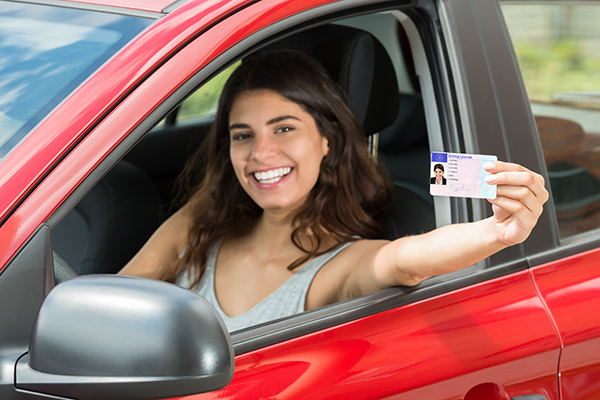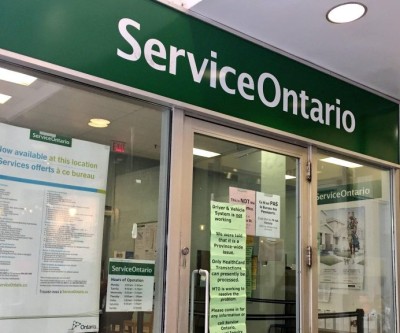
Table of Contents
- Obtaining a driver's license in Canada
- If you have a valid driving license, what should you do?
- Points related to individuals who have not had a driving license before:
- Requirements for obtaining a learner's permit:
- The classification of driver's licenses includes the following:
- Driving training programs:
- Graduate Driver Education Program
Driver's License in Canada
Obtaining a driver's license in Canada
If you are a resident of Canada and intend to drive a car or motorcycle for transportation within the city, you should know that obtaining a driver's license is mandatory. A Canadian driver's license is valid for three years and expires on your birthday after this period. The process of obtaining a driver's license in Canada may vary depending on the province or territory you are interested in, but in general, you need to follow the steps below:
Study the driving laws and regulations in Canada: To obtain a driver's license in Canada, you must first study and familiarize yourself with the driving laws and regulations in Canada.
Driver's education: In most provinces and territories in Canada, to obtain a driver's license, you must first complete a driver's education course and successfully pass it.
Written test: After completing the driver's education course, you need to pass a written test that includes questions about the driving laws and regulations in Canada before you can proceed to the practical test and obtain a passing score.
Practical test: After passing the written test, you need to take a practical driving test. In this test, you must demonstrate good control of your vehicle and be familiar with driving in various conditions, such as driving on high-speed roads, driving in adverse weather conditions, and more.
Payment of fees: To obtain a driver's license in Canada, you must pay a fee that covers the cost of the education course, written and practical tests, and the issuance of the license.
License issuance: After passing the written and practical tests and paying the fees, you can receive your driver's license from the relevant office.

If you have a valid driving license, what should you do?
If you have valid driving licenses from other countries and provinces, you should participate in the written exam to obtain the relevant license for Canada. After passing the vision test and driving exam in the city and meeting the requirements, you can receive the Canadian driving license. Another thing you should do is to have your license translated and certified by the judiciary and the Ministry of Foreign Affairs. After translating, you must have the original license and its translation with you to obtain the license. Another important point to consider is obtaining your driving record letter and translating it. You can use it for future car insurance discounts in some provinces.
You can convert your Iranian license to an international driving license. To do this, you can obtain the International Driving License booklet, which is translated into 7 languages, from the Iran Travel and Driving Club of the Islamic Republic of Iran by paying less than 100,000 tomans and submitting the required documents and your license. When you want to receive your international license, you must surrender your original license obtained outside of Canada. With this license, you can drive in Canada for 120 days. If you have a valid license from other regions and provinces of Canada or the following countries, you can replace your license without the need for the driving exams mentioned above.
The mentioned countries include Australia, Austria, Belgium, France, Germany, Great Britain, the Isle of Japan, Northern Ireland, Korea, Switzerland, and the United States.
To register for a driver's license in Canada, you must register at the nearest Driver and Vehicle Licensing Office and have your turn for the exam determined, while carrying your documents.
Points related to individuals who have not had a driving license before:
If this applies to you, you must request a learner's permit. This permit is called a beginner's permit. When you have this permit, you are allowed to drive as a learner driver. If you are under 18 years old, what is the obligation? In this case, your guardians must read the Beginner's Guide and obtain the corresponding consent form.
Requirements for obtaining a learner's permit:
It depends on your age. If you are 16 years old or older, you must purchase the rulebook either online or in person and study it. By visiting the relevant offices mentioned, you must pay the examination fee and receive the appointment for the written and vision tests and be present at the designated location on time. After obtaining the necessary permit, you can proceed with the practical examination if you meet the following conditions.
The classification of driver's licenses includes the following:
G1 Exam:
After participating in the rulebook exam, you will receive the G1 license, and you can drive with someone who has a G license. It is essential to note that you should not attempt the G2 exam without practice.
G2 Exam:
This is a temporary or 5-year license. After passing the G1 test, you can request to take the G2 exam. You must provide the necessary vehicle for the practical exam yourself.
G Exam:
This exam is also known as the highway or full license. You have four years to take this exam; otherwise, your G2 license becomes void. The G level exam is the same as the G2 level. Only in this exam, you will be taken to the highway.
Driving training programs:
These programs are offered by private driving schools and consist of two parts: theory and practical. In the practical part, you will be taken on the road with an instructor to receive training. The introductory course includes the following: If you are a beginner driver and have not completed the driving training program, consider this course as a compulsory course. This course is held in two sessions and lasts for 5 hours.
Graduate Driver Education Program
This program is designed for individuals who have recently obtained their driver's license, and it is a three-stage system that helps novice drivers gain experience in hazardous situations.
Auto Insurance
In addition to your driver's license, you must have appropriate auto insurance. Pay attention to the following factors when choosing the right insurance:
1. Age and driving experience.
2. Your previous driving violations and driving experience.
3. The province in which you reside.
Suggested Content
Latest Blog
Login first to rate.
Express your opinion
Login first to submit a comment.
No comments yet.
























